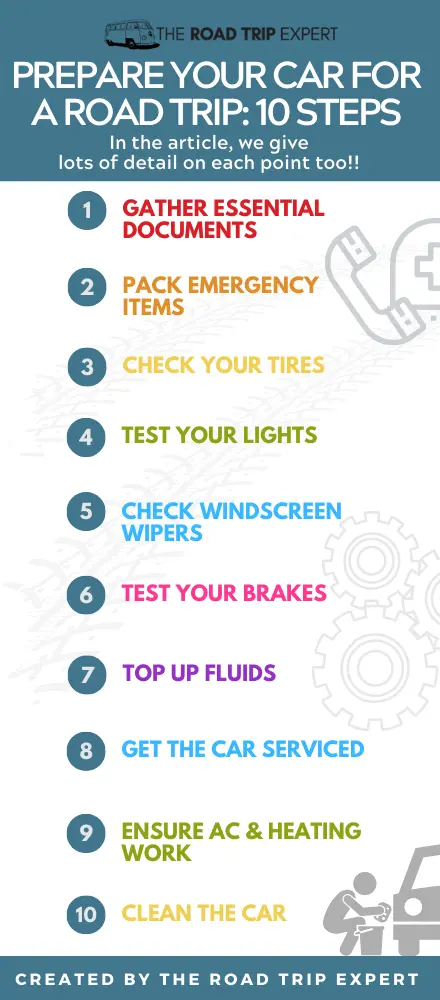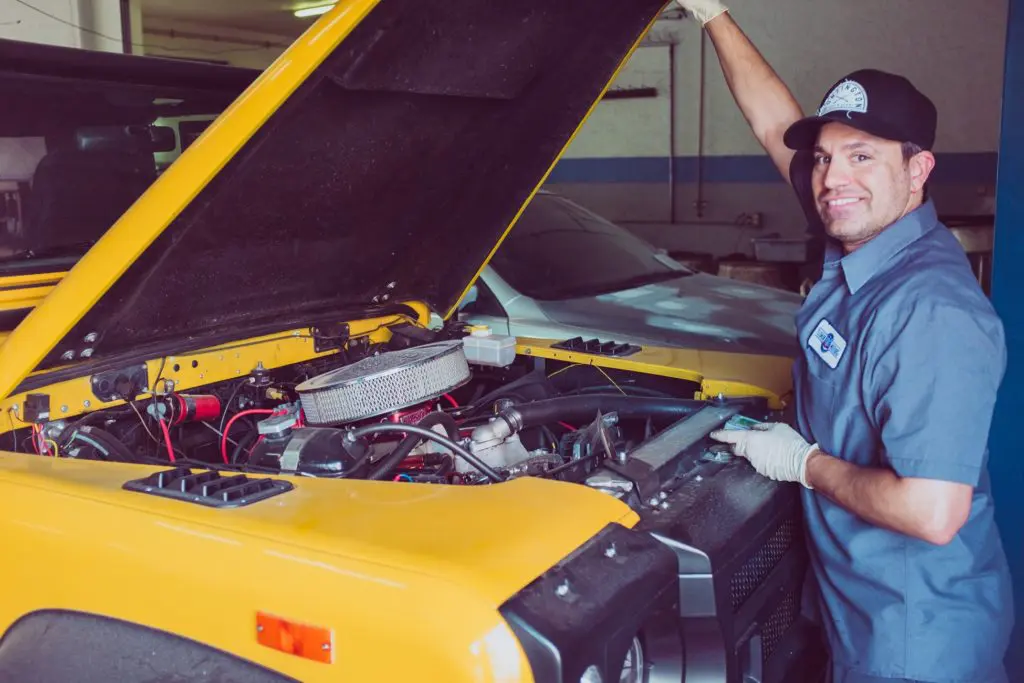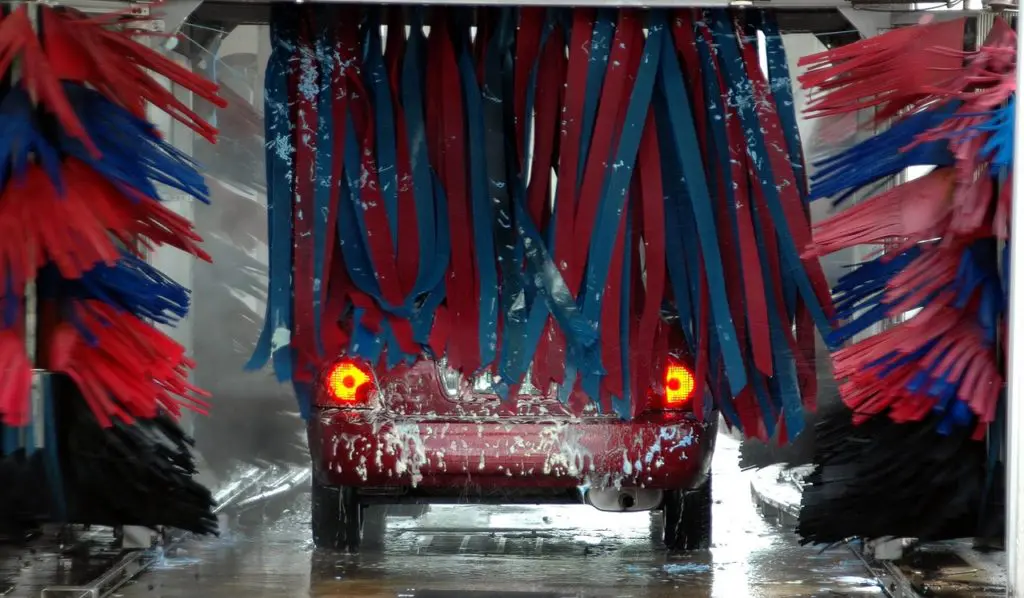Road trips are great fun, but it’s important you are ready for anything. With that in mind, you might be wondering how to prepare a car for a road trip.
Thankfully, there are a few simple steps you can take to avoid any nasty vehicle problems along the way.
In this article, I’ll give you everything you need to know so you can hit the road with confidence.
We will cover 10 simple steps that will allow you to check your vehicle before a long journey. Don’t forget to check out this other useful article on how to plan a road trip if you’re heading out on a big adventure!

Affiliate Disclosure: Thank you for supporting The Road Trip Expert. When you purchase through links on this site, we may earn an affiliate commission. Please see our advertising disclosure for more details.
How to Prepare a Car For a Road Trip in 10 Simple Steps
I’ve compiled 10 simple steps to prepare a car for a road trip. They’re easy to follow and will ensure your dream vacation goes without a hitch. They might even save you money on your road trip! You can use them as your road trip checklist.
To make your pre-trip car inspection even easier, some of the points have videos you can watch, with simple instructions from mechanical experts.
Taking a road trip with someone else? Share this article with them so you can prepare your car together!
1. Prepare all your essential documents
Owner’s Manual
Check you have your owner’s manual!! This contains essential information on your vehicle including how to top up fluids, how to jump-start your car if the battery dies, and what to do if the engine overheats.
We will refer to it quite a lot in this article.
Can’t find the original copy for your vehicle?
You can download one online.
Almost all manufacturers make their owner’s manuals available on their own sites. Failing that, you can use Just Give Me The Damn Manual, which archives and shares owner’s manuals. Just search with your car make, model, and year.
License and car insurance
Check your license plate and insurance are still well within the expiration date. You may need these documents at some point during your trip so put them in a safe place and keep them there, the glove compartment for example.
Roadside assistance
Roadside assistance can be as cheap as $5 per month.
This can really be in the case of a flat tire, a dead battery, or anything worse going wrong and causing you to break down.
Ensure you have your roadside documents in your glove compartment.
How to Get Roadside Assistance
The American Automobile Association (AAA) offers well-known and reliable breakdown cover.
Enter Your Postal/Zip code to find your local AAA/CAA club and helpful roadside assistance.
2. Pack emergency items
Make a Road Trip Packing List and include emergency items. Ensuring you have everything you need is an integral part of how to prepare a car for a road trip.
Key Items to Include
- Jerry can
When traveling long distances in remote areas, it’s a good idea to fill up your tank AND a jerry can whenever you come across a gas station
- Thumb button control for precise pouring
- 7/8-inch funnel spout fills even the smallest…
- Attached dust cover keeps your spout clean
- Roadside emergency kit: A car emergency kit is designed to cover you for any eventuality.
They typically contain Jumper Cables, Tire Sealer-Inflator Light Sticks, Reflective Vests, Rain Ponchos, Warning triangles, Whistle, Tire Pressure Gauges, etc.
- 🚗 【Things you may need】: This roadside…
- 🚗【Safe and durable】: UL certified jumper…
- 🚗 【Car repairs tool box】: Small and…
- First Aid Kit – This should contain at minimum band-aids, sterilizing wipes, bandages, scissors, painkillers, medication
- Comprehensive Emergency Kit: Includes adhesive…
- Convenient Packaging: An ideal workplace and home…
- Easy Access: This convenient and versatile work,…
And depending on whether you’re driving in Winter conditions and/or across rough terrain:
- Snow chains
- Towing rope
3. Check Your Tires
There are 3 things you need to check with your tires: pressure, tread, and your spare tire.
Let’s break them down:
Check the tire pressure
Make sure your tire pressure is correct according to the guidelines set out for your vehicle in the manual. The tire itself will also have the maximum pressure written on it.
How to check tire pressure
Use a pressure gauge. You can either buy your own to take along on your trip (handy for travel in remote areas) or find one at a gas station. These usually require some change to operate.
Use the gauge at the gas station to read the pressure in your tires then top up to the correct level!
The recommended pressure is indicated on the tire pressure sticker. In most vehicles, you’ll find this on the driver’s door frame. Alternatively, it is in the owner’s manual.
Add or take out air accordingly.
Check the tire tread
It’s unsafe to drive on tires with too much tread wear.
So, what does this mean?
You need to check your tires still have ample tread before setting off!
How?
The Penny Method:
Check your spare tire
Finally, check the spare tire over. If it’s a full-size tire (the same as the others), the pressure should also be the same. If it’s a smaller temporary-use tire, the pressure is indicated on the sidewall of the tire.
Once again, if unsure, the owner’s manual will give you the exact amount.
Check you know how to remove your spare tire – especially if it’s stored underneath your vehicle and not in the trunk.
Check you have a working jack and a lug nut wrench.
Need a reminder on how to change a tire?
Get some revision in here:
4. Test Your Lights
It goes without saying that your car lights are essential to safe driving. While easily fixed if not working, it’s important to check them all before you go.
How?
Turn them on!
Get someone else to confirm that each light is properly working. If any aren’t in working order, ensure to replace the bulbs before you leave.
Check:
- Headlights (inc. full beam)
- Blinkers (indicators)
- Brake lights
- Hazard lights
- Reverse lights
- Fog lights
A spare bulb might not be a bad idea, especially if you won’t be traveling near any auto shops during your vacation. If you need to replace a bulb on the road, refer to your owner’s manual for full instructions.
5. Check Your Windshield Wipers
You need to be able to see when you drive, right?
It’s an awful feeling when you’re caught in a storm while driving and can’t see anything because your wipers aren’t in working order.
Fortunately, it’s simple to check and easy to replace them if they’re worn out.
If your road trip car still has the original wipers, you can simply replace the rubber refills. They are much less expensive.
They can be purchased from any Auto shop.
Use a towel or something soft to protect the windshield. The arms can spring back and crack the windshield.
Need instructions on how to change them over?
Find them here:
6. Test your brakes
Checking your brakes is an important part of getting the car ready for your big trip. You can’t drive without them!
How do you check your brakes?
Take your car for a drive and listen carefully when braking. Listen/lookout for any of the below:
- Squeaking noises
- Scraping noises
- A burning smell
- Brake pedal going all the way to the floor
If you have any of these symptoms, it could be time to replace the brake pads so get your car checked over at the garage. None of the above but still unsure? It doesn’t hurt to have a mechanic or brake specialist confirm that you’re good to go!
7. Check Your Fluids (and top up if necessary)
Check your fluids to see if they need to be topped up or if it’s time for a change.
When checking fluid levels, ensure you are parked on level ground for accurate readings!
Fluids you should check:
1) Engine oil
How to check your engine oil:
- Turn off your engine and wait 10 to 15 minutes for it to cool.
NB. You may have heard that you should check your oil when the engine is cold. This actually depends on your car. Some manufacturers have changed the dipstick to read correctly even when the engine is warm. Your owner’s manual will give you the specifics. - Open the bonnet and remove the engine oil dipstick. It usually has a red or orange tab.
- Wipe the dipstick with a clean rag or paper towel.
- Reinsert the dipstick. Give it a second and then remove it again.
- Review the oil level using the markers toward the bottom – these will tell you if your engine oil is low, high, or at a decent level.
- If your oil is low, you should top it up. Your owner’s manual or your local auto shop will tell you what type of oil to use.
- Check the color and consistency of the oil on the stick. If your oil looks black, thick, gritty, or milky, it is no longer effective, and is time for a change. Your local garage will do this.
Check out this helpful video for more information on checking your engine oil:
2) Radiator coolant
Without enough coolant, your engine will overheat. Check the engine coolant level in the clear(ish) tank. The coolant level should be between “Low” and “Full” marks. Your owner’s manual will have more instructions if you cannot find it.
Be aware of your coolant being a “rusty” color as this can indicate a problem with its function.
If the coolant level is a little low, top it up. Your local Auto shop will be able to recommend which coolant you should use.
If traveling in Winter, you’ll need a special type of coolant that won’t freeze in cold temperatures! Include this in your Winter Road Trip Packing List.
If the level is well below the “Low” mark, get your vehicle checked for leaks. These should be fixed before you set off.
3) Windshield washer fluid
Check you have ample fluid in the windshield washer fluid reservoir. In certain countries, it is actually illegal to drive with this empty as it impacts safety. Therefore, this is an important part of preparing your car for a road trip.
To fill up the washer fluid you need to purchase it from an auto shop or garage. You will then mix it with water and insert it into the correct container.
You can also pick some up online.
- Genuine BMW part that fits your specific vehicle
- Windshield Washer Fluid
- Part Number: 83-19-2-221-702
Once again, if traveling during winter, you’ll need washer fluid that won’t freeze in sub-zero temperatures.
4) Power steering fluid, Brake fluid, Transmission fluid
Follow the next tip and your mechanic will check these 3 essential fluids for you…
8. Take your car for a service
Taking your car for a service and spending a small amount of money on a tune-up before you leave could save you money in the long run.
Having to cut your road trip short due to an easily preventable car repair is not fun.
Believe me, I broke down 100 miles into my 4000-mile road trip in Australia.
Review your service schedule within your service booklet to find out if you are due a service. I recommend a service before a lengthy road trip!
It’s one thing to prepare your car as best you can for your road trip, but a qualified mechanic can check things you simply can’t without a lift and proper equipment.
For example, they can accurately check your fluids, filters, hoses, belts, brakes, steering, suspension, etc.

These simple checks can also save you from getting a pricey ticket for something not working properly.
Auto shops and garages frequently offer a “service” which includes a safety inspection along with an oil and filter change.
Book a service in advance (at least 2 weeks prior to your trip). That way, if there are any major issues, you will have enough time to get them fixed and ensure your car is safe to drive.
9. Ensure the A/C/Heating is working
Test out your air-conditioning to check it’s running properly and pumping out cold air.
You want to be comfortable I assume?
But that’s not all…
The air conditioner doesn’t just cool the inside of the car. In fact, you still need to check this even if you’re not traveling during the summer.
Why?
It also removes humidity and prevents the windshield from fogging up in rainy or cold weather. Check you can get the blowers on to de-mist your car when necessary.
Finally, it goes without saying that heating is important if traveling in winter conditions. Test this out to make sure it is working before you go.
10. Clean your car
Give your car a nice clean-up.
If you’re going to be traveling over some rough or muddy roads, feel free to skip cleaning the outside. But at least clean and clear out the inside.
You will be much more comfortable once you’re on the road and will be able to pack easily and organize everything.

If you really want to get your vehicle looking as good as new you could consider this car cleaning kit
Chemical Guys Car Cleaning Kit
- EASY TO USE CAR WASH BUCKET KIT – Chemical Guys…
- REDUCE SCRATCHES AND SWIRLS – Traditional car wash…
- SPECIALTY CAR WASH SOAPS – Included in the kit are…
So, there you have it.
Now you know exactly how to prepare a car for a road trip.
But we’d also like to hear from you.
Which tip did you find the most useful?
Or is there anything else you like to do to prepare a car for a road trip?
Either way, leave a comment below and let us know!
More From The Road Trip Expert
Whilst you’re here…
We have some new articles that might help with your road trip, including help with finding cheap parking, staying awake while driving, and plenty of road trip entertainment so you don’t get bored.
Feel free to check them out!
Disclosure: Some of the links in this article may be affiliate links. This means I earn a commission if you make a qualifying purchase, but this is at no additional cost to you. Thank you for supporting The Road Trip Expert.








Joe Hall
Thursday 10th of December 2020
It's a great point that the owners manual will have all the essential information that you need in order to get your car ready fro the trip. We want to get the number of some roadside assistance as well so that we can call them when needed. We need to make sure that we are preparing ahead of time so that we aren't scrambling during an emergency situation.
Thomas Schubert
Wednesday 18th of November 2020
Checking the manual is a great idea, I know from experience that I have missed out on important features in a new car that I could have made use of because I didn't read the manual first!